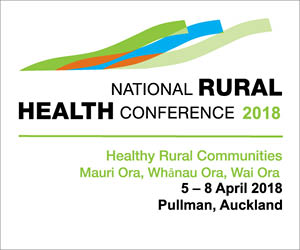Every year around the country there is a scramble to decide which nurses get their postgraduate study funded and which do not.
Rationing limited funds results in about 50-80 nurses – and many hundreds more around the country – being turned down each semester at Counties Manukau District Health Board, where Dianne Barnhill is the coordinator of postgraduate nursing education.
Barnhill, national spokesperson for the country’s postgraduate coordinators, says the annual rationing includes deciding which priority level is given to prescribing, nurse practitioner or other advanced practice training within each DHB. The problem is that for each nurse who is funded to complete a prescribing or clinical practicum, two other nurses miss out on funding for a conventional postgraduate paper.
The number of nurses being turned down, or being too discouraged to apply, is believed to be the reason behind a snapshot survey undertaken by the National Nursing Organisations last year, which found that around 30 per cent of postgraduate nursing students are self-funding their studies.
With the launching of the new postgraduate diploma for nurse prescribers, the nurse practitioner role leaping in numbers and gaining increasing traction, and other advanced practice initiatives, the pressure on the limited postgraduate nursing funding pool is not expected to let up anytime soon.
Meanwhile a funding shake-up is on its way. Nurse leaders are adamant that nursing funding should not be reduced and are ready to argue that it should increase so that nursing can better meet the country’s healthcare needs.
Change is on its way
As Nursing Review went to print, it was anticipated that postgraduate funding would be ‘business as usual’ for 2018. The postgraduate nursing funding pool, which in almost a decade has increased only slightly from $12.5 million to $12.9 million*, and the funding system itself are not expected to change, yet.
But any day now a decision is expected on the likelihood of a new funding model for the 2019 academic year for not only nursing postgraduate training but also for post-entry and postgraduate training for all the health professions and workers funded out of the $185 million Health Workforce New Zealand (HWNZ) pool.
The decision will follow a HWNZ consultation document Investing in New Zealand’s Future Health Workforce released earlier this year that argued that change is needed as the current funding approach is based largely on “historic and current hospital-based services” and needs to be more responsive to “unmet need, emerging technologies, and changing models of care”.
More than 90 submissions were received on HWNZ’s proposal to start an annual process of “disinvesting” funding from some training areas in order to free up a rolling proportion of HWNZ funding to go into a new contestable “investment” funding pool that will be allocated using transparent, prioritisation criteria aimed at better meeting future health needs.
Not surprisingly, analysis of the 90-plus submissions from across the health professions and sectors found “strong views” that the current funding pool was inadequate and highlighted “considerable concern” about the impact of “disinvesting” in some training areas, plus limited support for a contestable funding process.
“We don’t want to lose a single dollar of it [nurse postgraduate funding],” says Sue Hayward, head of the national Nursing Education Advisory Team (NEAT). Hayward, the chief nursing and midwifery officer for Waikato DHB, says nursing fought hard to access the funding in the first place and it is worried that – unless “miraculously” there was new funding – the rolling shift to contestable funding could risk some of that hard-won funding being lost.
At present, medical (including GP) training takes the lion’s share (just under $117 million or 63 per cent) of the HWNZ funding, with nursing following next with $22.1 million (12 per cent, which includes the $12.9 million postgraduate funding pool, roughly $850,000 for the pilot NP training scheme and up to 1,300 places for new graduates in the Nurse Entry To Practice programmes).
The next biggest share is to mental health and addictions ($21.8 million or 12 per cent, which includes post-entry clinical training of psychiatrists and psychologists and some funding for mental health nursing, allied health and other mental health workers), followed by voluntary bonding ($8.2 million or four per cent) and smaller pots for midwifery (three per cent), allied health, disability support, and Māori and Pacific support (which all get about two per cent each).
Nursing submissions to HWNZ, including Barnhill’s on behalf of postgraduate nursing coordinators, the New Zealand Nurses Organisation, College of Nurses and Nurse Education in the Tertiary Sector (NETS) are open to change but share common concerns that the proposed model still seems to be medically focused and that nursing, despite being the largest health profession, risks being invisible and sidelined.
More detail is needed on how a contestable investment funding pool and national prioritisation framework would work in reality to create a health workforce better fit to meet future health needs. Some nursing groups also expressed fears of the contestable investment fund being captured by political or interest groups, applications being expensive and time-consuming to pursue, and also concerns about how return on investment is fairly measured in postgraduate education.
A fairer share
What does nursing want from post-entry training reforms? A fairer slice of the cake is a common call, and for the health sector to take stock of what is the best health workforce mix to meet the country’s future health needs. This includes, some argue, taking a close look at whether investing proportionately more in medical training delivers the best value for the limited health training dollar.
Kathy Holloway, previous chair of NETS and current co-chair of the College of Nurses, believes the country needs a national health workforce strategy first, before deciding on a new funding model.
“One of the things we haven’t had in New Zealand is an ability to step back as an overall health system – rather than discipline by discipline – and look at what people who use the health system need and what workforce mix we need to deliver that.
“Taking a whole-of-workforce approach gives us a better opportunity to get a sound and sustainable workforce policy rather than using an historical basis, which is what we have done.”
Professor Jenny Carryer argues in the college’s submission that the current spend on medical training is not producing a fit-for-purpose, future-oriented workforce, particularly with the exponential growth of technologies and the increasing demands for “preventative, pro-active community-based care”.
In this issue of Nursing Review (see College of Nurses page), she also asks whether producing more GPs will actually solve the problems in meeting primary health care demands. She urges careful consideration of a proposal to train more NPs (at a cost of approximately $100,000 each) rather than more GPs (at a cost of about $600,000 each).
Health Workforce New Zealand is currently evaluating a pilot of the dedicated Nurse Practitioner Training programme – currently in its second year of supporting 20 NP candidates a year – to see whether it will be continued and/or rolled out to more providers in 2018.
Nurse Practitioners New Zealand (NPNZ), in its submission to HWNZ, says a successful aspect of the training programme is that NP candidates have to have employer backing to be included. But getting employer or funding backing to become an NP, or another advanced practice role, can often be down to chance, says NPNZ.
The chances are higher, it says, for those in a DHB with a supportive director of nursing, chief executive or non-governmental organisation, but the odds are stacked against those based in a DHB “where nursing innovation is actively blocked or ignored due to personal philosophical stances, membership of a specific profession or personality clashes”. It asks what HWNZ intends to do to ensure that such a “postcode lottery” does not continue with future initiatives and training proposals.
Such an initiative is an approval of RN prescribing, backed by the Government as a way of delivering faster, more convenient care, but no new funding has been allocated for the prescribing practicum required for the prescribing qualifications, which requires roughly double the funding of a standard postgraduate paper.
Barnhill says DHB coordinators can sometimes stretch the funding by finding an inhouse prescribing mentor volunteer, but this is less likely in the primary care and aged care setting where the business model usually means that all mentors’ time – GPs, NPs or other mentors – needs to be funded. Just how initiatives such as nurse endoscopists and nurse colposcopists are funded into the future is also unknown.
Nonetheless, nurses’ appetites for postgraduate study, despite or perhaps because of the pressures to keep delivering quality patient care in a stretched healthcare system, is not in doubt. Thousands of nurses now have postgraduate qualifications and thousands more each year begin further study.
Hayward says that directors of nursing are clear that the investment to date in postgraduate nursing training is having a positive impact on patient care and outcomes. For her master’s degree, Barnhill surveyed nurses, nurse managers and nurse educators working in acute medical and surgical wards to ascertain the effects of postgraduate study.
All respondents perceived that clinical practice improves as a result, but Barnhill says it is very difficult to prove that impact on patients statistically. This issue was one of the reasons that NETS chose not to support the new HWNZ investment funding proposal, as it was unclear how return on investment from health professional education could be proven.
All in all, the new postgraduate funding model proposed has raised more questions than answers for most of those in the nursing sector who are ready for change but want more detail before deciding whether proposed changes will help or hinder the nursing profession’s flexibility and readiness to meet future healthcare needs.
HWNZ listening to nursing concerns
There is a “clear need” for further engagement with the nursing profession, says new HWNZ group manager Claire Austin.
She says dialogue is continuing with nursing leaders and representative bodies and there are opportunities for more dialogue with all parts of the sector on implementing any changes.
“We know we need a model that is flexible and efficient and that meets the needs of all professional groups and all services,” says Austin. “HWNZ is mindful of the difference in training models and the fact that many nurses self-fund postgraduate training.” She says it is aiming to ensure that any changes “support innovation and new models of care and encourage individual nurses to pursue additional qualifications”.
One of the strong themes in submissions, she says, is a desire to work with HWNZ on developing a national health workforce strategy. Developing that strategy in partnership with the sector will provide further opportunities to shape how post-entry training is funded.
A decision on changes in the wake of the HWNZ consultation document is expected soon. Watch this space to see what this means for postgraduate nursing training and whether fewer or more nurses will be out of pocket in the future.
HWNZ-funded postgraduate nurse study statistics
- 2014: 2,282 nurses funded (1,524 training units**)
- 2015: 2,354 nurses funded (1,544 training units)
- 2016: 2,464 nurses funded (1,590 training units) funded in semester one
- 2017: Total nurses and training units funded have yet to be confirmed*
* As Nursing Review went to press, Health Workforce New Zealand provided figures stating that $13.2 million was allocated to the postgraduate nursing training pool for 2016-17, of which $12.9 million has been spent.
** A training unit is the equivalent of a two-paper PGCert or one year of a PGDip or master’s degree programme. The cost of a unit varies from $7,374 per annum for two standard papers to more than $28,000 for two mentored practicums (i.e. the prescribing practicum required to become an RN prescriber or NP, and the clinical skills practicum required to become an NP).





















